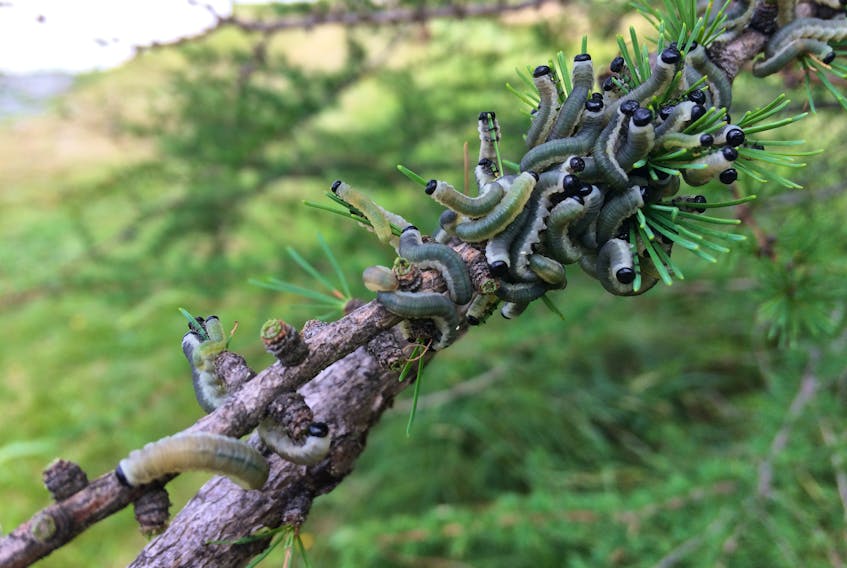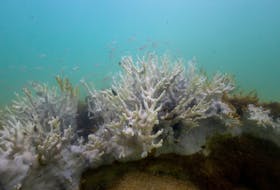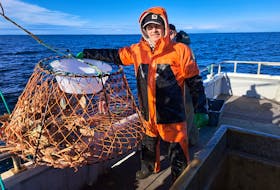Let’s talk solutions.
The full-on attempt at the mitigation of the effects of climate change. Mankind coming to its own rescue.
I raise the topic as Democratic presidential hopefuls in the United States battle over climate mitigation plans, pitching around ideas that would cost trillions of dollars.

Candidate and entrepreneur Andrew Yang is pitching fusion reactors — a technology that’s not yet running successfully — along with ideas like moving huge numbers of Americans away from coastlines to higher ground, and mandating zero-emission vehicles. He also talks about last-ditch efforts like giant space mirrors to reflect sunlight away from the Earth’s surface, and injecting sulphur dioxide into the stratosphere to mimic the sun-blocking effects of volcanic eruptions.
As part of that debate, I bring you the island of Newfoundland’s most successful introduced species. No, not moose. (The introduction of a handful of pairs of moose — which face no effective predators on the island once they reach full size — has changed the vegetative face of the landscape, as the moose population ballooned to more than 125,000 animals.)
Let’s talk shrews.
Tiny little things, masked shrews (Sorex cinereus cinereus, if you’re taxonomically inclined) were brought to Newfoundland from New Brunswick with a simple idea in mind. The shrews were introduced to fight the larch sawfly, which arrived in North America during the Miocene period.
The sawfly was chewing its way through tamarack stands on the island with devastating effect, weakening and killing the trees with regular outbreaks. Adult sawflies place eggs inside tamarack branches; seven to 10 days later, caterpillars emerge and strip new foliage, then the larvae drop to the ground, burrow into moss and spin cocoons. Shrews and other small mammals eat the cocoons.
The Newfoundland shrews, 10 males and 12 females, were introduced at St. George’s on the west coast of the island in 1958. The transfer was novel enough that it was written up in the New York Times.
There are many variables out there, and things don’t always go as planned.
Some were subsequently moved to central Newfoundland. They are now, effectively, everywhere. By 1971, they were found to have colonized 91 per cent of the island. By 1984, average population densities per hectare indicated there would be around 57.9 million masked shrews on the island — there are only slightly more than 500,000 people in the whole province. It’s quite astounding, really: shrews have a mean body weight of 3.6 grams, yet their range expanded by seven to 12 miles per year.
It reminds me, somehow, of that Ogden Nash poem “The Termite”:
“Some primal termite knocked on wood
And tasted it, and found it good!
And that is why your Cousin May
Fell through the parlor floor today.”
With all those shrewy mouths to feed, surely that marked the end of larch fly infestations, right? After all, a masked shrew has an incredibly fast metabolism, with its heart beating 800 times a minute — it has to eat three times its body weight daily just to stay alive.
So, sawfly infestation gone?
Well, no.
While not much work had been done at the time, a 1984 research paper points out “The fact that larch sawfly infestations reached outbreak proportions (in Newfoundland) late in the decade 1971-1980 clearly indicates that shrews were not able to control the insect.”
Right now, there’s an ongoing infestation on the province’s Avalon Peninsula and further into central parts of the province. It’s no trouble to find clusters of the larvae stripping tamarack bare.
Shrews are firmly entrenched in a place they never were before, eating three times their body weight every single day.
Science can do a lot of things, even space mirrors, if we so desire.
But there are many variables out there, and things don’t always go as planned.
Shrew knew?
Russell Wangersky can be reached at [email protected] — Twitter: @wangersky.
MORE FROM RUSSELL WANGERSKY









